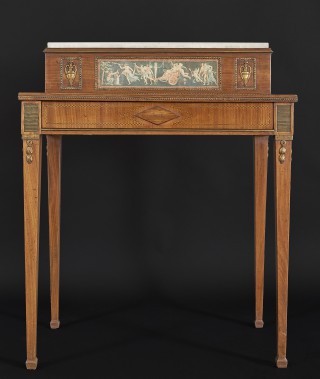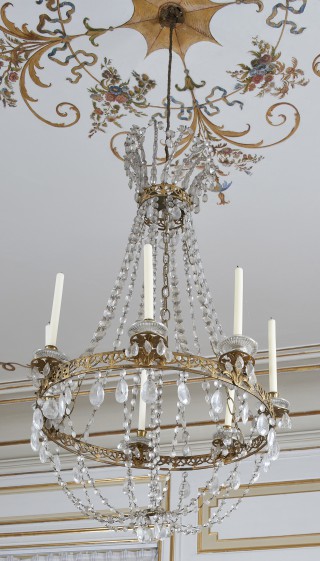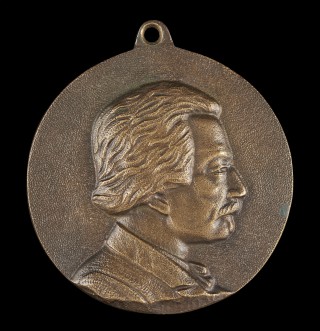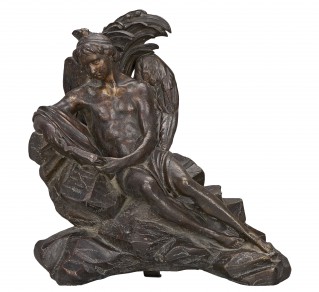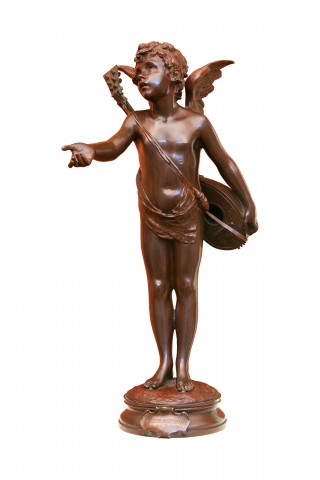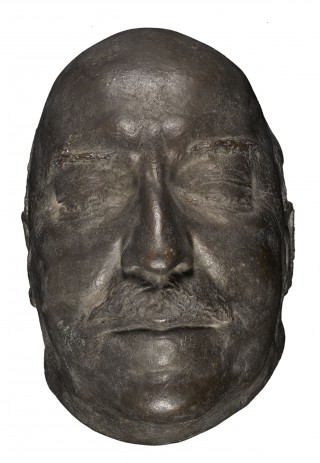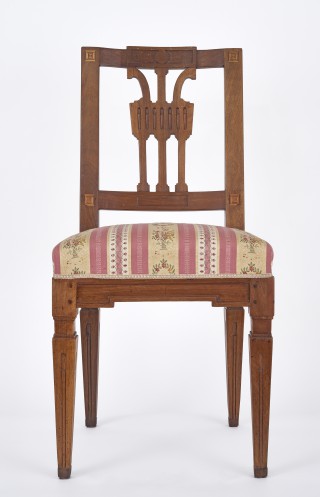Francis Bacon
- Date
- c 1620
- Object type
- painting
- Technique
- oil
- Material
- wood
- Dimensions
- 91,0 x 74,5 cm
- Acquisition date
- 1792
- Location
- The Palace on the Isle - Portrait Room, ground floor
- Marks and inscriptions
- red number 590 of the Stanisław August collection, bottom left
- Place of Origin
- United Kingdom (Europe)
- Owner
- The Royal Łazienki
- Museum number
- ŁKr 896
Francis Bacon (1561–1626), English philosopher, co-founder of empiricism, statesman and jurist, 1596 Queen’s Counsel at the Court of Elizabeth I, 1618 Lord Chancellor at the Court of James I Stuart, who in that same year knighted him First Baron of Verulam; from 1621 Viscount St Alban.
The painting was a gift to Stanisław August from his brother, the Primate Michał Poniatowski, as shown by the inscription on the back. …
It is a variant of a popular portrait of Bacon, depicting the sitter dressed as the Lord Chancellor. Roy Strong believes the prototype was the portrait now in The Royal Society in London (inv. no. RS 9655 … ), dated to c. 1618–20, attributed to the circle of Paulus van Somer I (as catalogued in the The Royal Society: https://pictures.royalsociety.org/image-rs-9655), or Abraham van Blyenberch, who, like Somer, was then active in London (Strong 1969, p. 13). The London painting, believed to have been painted from life, differs from the versions derived from it: the arrangement of the hands holding the letter (hanging down and not leaning on the table), the shape of the ruff (multi-layered, not in the form of frills). The most important of these versions was a full-length portrait in Gorhambury House (St Albans, Hertfordshire), posthumous, probably 3rd quarter of the 17th century (cf. Strong 1969, pp. 13–14; an 18th-century copy in the National Portrait Gallery in London, inv. no. 1288). In 1731 John Vanderbank made six knee-length copies after the Gorhambury portrait … . Most of the copies of Bacon’s portrait which are now known today, were made after Vanderbank’s version—i.e. after 1731.
The Łazienki painting is not one of them, however. Roy Strong (1969) defined it as an ‘early copy’ and his intuition has recently been confirmed by the dendrochronological analysis of the oak support performed by Tomasz Ważny (2014), who indicated the most probable date of the execution of the painting as c. 1622. … [D. Juszczak, H. Małachowicz, The Stanisław August Collection of Paintings at the Royal Łazienki. Catalogue, Royal Łazienki Museum, Warsaw 2016, no. 119, pp. 433–436.]






